
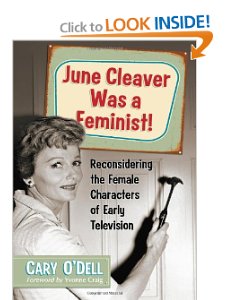
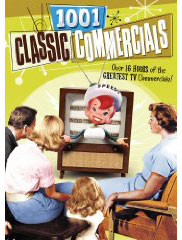
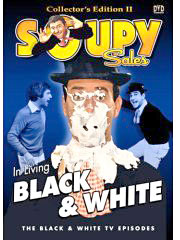
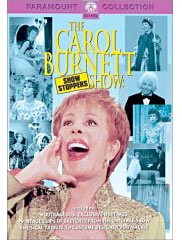
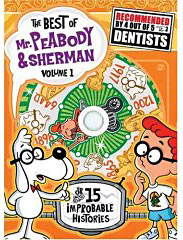
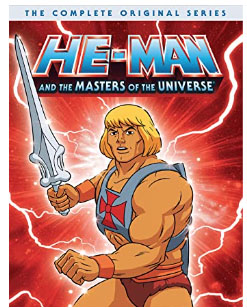
 |
 |
 |
 |
|
 |
 |
 |
TV Shows on DVD/ / / / / TV Blog/ / / / / Punk Book/ / / Holiday
Specials on DVD / /
/ / / / Classic
Commercials / / / TV
Shows on DVD Reviews
|
|||||||
|
PART THREE : by L. WAYNE HICKS
A: The young. The young audience. Q: Did you have a particular age in mind? A: Yeah, particularly anywhere from 3 to 8 years of age. Males left us earlier than females as they grew. That’s just the nature of our culture. Males between 8 and 9 were drawn to action programming and the like. Young females would very often stay with the show until 10 or 11 years of age. That was an indication more of the way we in this culture approach males and females differently. And we successfully reached that audience. The only surprise to us really from the beginning was the number of adults that we reached. About a third of our audience was adults. That of course I always interpreted as being positive because we felt these were parents experiencing the program with their children. Perhaps it was providing some guidance to them in providing nurturing skills and ideas that would be useful to them in nurturing their young people. "Sesame Street," on the other hand, in the beginning did not reach that audience at all. They were reaching older kids because they were dealing in older material, which they did realize and now the program’s entirely different. Now it does deal very much with the emotional development of the child and they’re much more on target than they were in the very beginning.
Q: Going into your show originally, were you focusing on just entertainment or did you have the educational component in mind already? A: I often made the point that there is no difference in
my mind between education and entertainment. That the stuff of entertainment
is education. That material is fascinating and it ought to be the basis
for entertainment, and that’s really what it was. We didn’t
want anybody, a child, looking at the show to say oh he’s trying
to teach me this. They’re trying to demonstrate that. We would have
failed if that occurred.
A: Well, we did, we always had consultants. We had people from the Harvest Mann Lincoln Institute or the Columbia Teacher’s College, places like that, who were on staff and met with our writers and our producers and others regularly and taught us. For those of us doing the program, it was kind of a workshop on the education of young people. But no, it didn’t happen overnight. A lot of us did rely. We were young. We were parents and we knew what parents were facing in raising children. We knew the questions they were asking because we were asking the same questions and we were just simply try to answer them. Yes, we did consult with people who were experts. On the other hand, depending on the expert -- some of them understood us tremendously; others didn’t know what their function was. We had some experts write Bunny Rabbit material for us and submit it and it was dreadful. It was really dreadful. We had to say, "We don’t need the material. Leave that to us. You just tell us what the needs of the child are, what’s important in the life of a typical 4-year-old, what’s typical in the life of an atypical 4-year-old, a child who has this problem or that problem or doesn’t have the kind of home setting that would be ideal in raising a child. Give us an education in all of those things, hey, and we’ll take care of Bunny Rabbit and Mr. Moose and all that." That’s pretty much the way it worked out. It was a very collegial effort and it turned out well.
A: You didn’t know it then. We didn’t want you to know it. Q: I look back at the show and I think about Tom Terrific and ping pong balls and Dancing Bear and I have this sense of well-being. A: That latter is probably the most important thing you
could say. However we got there, that’s where we were going. Giving
you that sense of well-being, giving you that confidence, that good feeling
that you were able to do anything, that you were able to accomplish some
things. That you were able to undertake something that maybe other people
would tell you you couldn’t do. That was important. That was where
we were going. And how we got there really wasn’t important. Whether
it was the culmination of a circuitous plot by Mr. Moose and Bunny Rabbit
which ended with ping pong balls on my head, it didn’t matter how
we got there.
A: It’s kind of like the Dancing Bear story. It was nothing. It was just an idea. We wanted to give a device to Mr. Moose of some kind. A writer came up with this notion. The only difference was when I looked at the script I said, "Oh, no" because he had called for golf balls to drop on my head. I said, "I’m not going to last very long if you’re going to drop golf balls on my head." Somebody said, "How about ping pong balls? They’re not weighty and you’ll be able to take that." I said Fine. If it’s set up properly, it’s a funny concept. Mr. Moose enjoyed it so thoroughly; as did every child and ever parent at home enjoy it. They were laughing with the Moose. They weren’t really laughing at me. I liked being in that position, of being outwitted by Bunny Rabbit and Mr. Moose because there’s a vulnerability to us as adults. We’re not perfect, and it’s important for a child to understand a parent is not perfect. That it is possible to be smarter than a parent once in a while. Q: Was it written that way, that Mr. Moose and Bunny Rabbit would sort of be your children on the show and you’d be the parent? A: Yeah. Well, they weren’t my children but they certainly were surrogates for children and they were mischievous. They had these really way-out ideas that any child would find wonderful. They conduct themselves that way. That was fine. That was very appropriate behavior for them. On the other hand, there was always a pulling back if they ever moved too far in that direction. It would never become unkind without our pointing out that you don’t do things that are unkind. Q: How many ping pong balls do you think were dropped on your head during the course of the show? A: Uh, 952,483. How do I know? (laughs) I had one child convinced once that we spent every day counting them and that we had that tabulated perfectly to the very last one over all those years and he believed it. But I won’t do that to you.
A: Yeah. When we first went on the air he was kind of a Down East character with a little bit of Down East accent. I think we lost that in about three weeks. It was me. It grew into me. It just evolves that you become more yourself and that’s really it. The Captain is pretty much me. And that’s fine. Q: And you went from having to whitening your hair to having white hair. A: That’s for sure. Hey, I have less hair than the Captain did. (laughs) If I were to do it today, I’d still wear a wig. But I never want to do that again. I’d love to go back. Q: The attempt to bring it back with a different actor didn’t work. A: Oh, God no. Absolutely not. I was not involved with that at all. I offered my services as a consultant but they didn’t want me. There’s a tremendous audacity in this business. Take a producer from Fox’s Saban, the people who did it, they don’t need anybody. They don’t need the original cast, they don’t need the writers, they don’t need the producers. "We know how to do a show. We did the Power Rangers." So I just walked away. Q: So if someone were to put it on the air again, would you be willing to step back in the role of the Captain? A: I really wouldn’t want to come back in costume as the Captain because it’s a lot of work. What I would be willing to do is the creation of new material and I would be very willing to do maybe an animated Captain that would be part of the show. That’s very possible. We could do some very nice material there, including the development of a lot of new characters. What can be done today with the technical advances that have occurred in the last decade are just tremendous. I think we could make a very presentable program. I don’t want to get involved in the production as the executive producer anymore. I’ve had that. But if other people wanted to do it, my services would be available to them and I think we could do a very good program.
A: He was talking about the environment in 1955. Many adults didn’t know what environment in that context meant. This was early on. Nobody talked about the environment in those days, not certainly on a general program and certainly not one for children. But he had a reverence. That came from him. It wasn’t something that our writers said: "Now you’re going to have a reverence for life." He taught them that. He felt that way, very strongly. He was a protester when they were building dams on rivers that would destroy farms and property. He was for clean water. He was for clean air. He was for non-fossil fuels and production of energy and the like. His reverence for life was there. It was for the growing things, the vegetables and the plants he would literally bring from his farm in Pennsylvania. It was obvious that Lumpy was at home with these things. Q: What did Gus Allegretti bring to the show? A: A genius is what he brought. Gus is a genius. He’s a great, great puppeteer. Bunny Rabbit and Mr. Moose and Dancing Bear. But he’s also got an incredible sense of humor. A wonderful, wonderful sense of humor. It sounds denigrating when you say "childlike." I don’t believe that at all. It’s a simple honest quirky sense of humor that worked very well when the Moose did something or said something to the staid Captain. It was just an absolutely wonderful addition. We got along very well from the very beginning. We were good friends. We weren’t close personally, actually. We’re very different human beings. He’s a very, very conservative guy, recognizing his background. His parents were immigrants to this country. He was very appreciative of America and all that America meant to his parents and to his family and to him. Every once in a while somebody in the studio would express an idea that was a little too liberal and Gus would tie into it. He made good arguments. He wasn’t just ranting and raving. He was quite an intellectual. Q: What did you bring to "Captain Kangaroo"? A: I don’t know. It’s hard to define what you do. Q: How did you wind up working in television? A: I had just come back from service, in the Marine Corps
in World War II, at the end of World War II. I was in college and back
at my old job at NBC. I worked as a page at NBC. They didn’t like
it, but when I came back they had to give me my job back. That was the
law. I was going to college at night and working during the day. I got
involved with television, which didn’t exist then. There was New
York, Philadelphia and Syracuse. That was the whole NBC network in the
East in those days. There was hardly programming at all. NEXT:
Part Four of Bob Keeshan's interview See Also: Rare
Interview with Captain Kangaroo - Bob Keeshan |
Rare
Interview with Captain Kangaroo - Bob Keeshan
Please consider a donation
so we can continue this work!
Amazon Prime - unlimited streaming PR4 & PR5 Pages for Advertising
See Also: Captain Kangaroo History More on Captain Kangaroo Captain Kangaroo Books & Toys Rare Interview with Kevin S. Butler writes: In his conversation with Mr. Hicks, Bob Keeshan claims that originally CBS TV wanted entertainer Jerry Colonna to host the network's daily kid's TV show. Originally CBS had three performers that they were auditioning - Merv Griffin, folk singer Frank Luther and Jerry Colonna. These men were talented but with the exception of Griffin none of them had ever done a kid's show (Griffin had briefly served as the host of WTVJ TV 4, Miami's Lucky Duck Show. The heads of CBS TV decided to go with Mr. Keeshan's and Jack Miller's (Jack was Keeshan's first director) educational show concept. Another recollection of Mr. Keeshan's states that he did a skit on The Carol Burnett Show where he tried to explain the premise of Captain Kangaroo to a skeptical network exec (played by Ms. Burnett). This skit was actually performed on the Cher show in the 1970's when Keeshan and the Hudson Brothers were guests on Cher's Sunday Night CBS variety program. As to how Mr. Keeshan got the name for Captain Kangaroo, according to my interview with Jack Miller in October of 1989, he told me that the show was going to be set against the backdrop of a children's museum. Keeshan didn't like this setting, he feared that it would discourage children from watching the show. The setting was instead called the Treasure House and Keeshan's character was given the rank of "Captain of the Guards and Tour Guide." Jack liked that idea but he felt that the character needed a last name to offset the formal rank. He told me, "In those days, Kevin, kids TV shows had titles that were silly - Howdy Doody, Pinky Lee, Rootie Kazootie - and we needed a a last name that would not be too ridiculous but still make the Captain's name meaningful and funny. So we went to the bar that night and after a few beers and a quick trip to the men's room, Bob wrote down a name on a slip of paper and put it into my jacket pocket and he said to me, 'Here it is.' And the name on the paper said 'Captain Kangaroo.'" In regards to the years that Time For Fun and Tinker's Workshop were on the air on WJZ (WABC) TV 7 in NYC, Mr. Keeshan's knowledge of those two local series is inaccurate. Time For Fun was on from Monday, September 21, 1953 until Friday June 2, 1960 and that show was hosted by Keeshan's Corney The Clown, "Uncle Joe" Bova, Johnny Jellybean (Bill Britten) and by JJ Jellybean / Johnny Jellybean #2 Keith Hefner. Tinker's Workshop was on Channel 7 from Monday, November 15, 1954 to Friday, August 22, 1958 and the character of Tinker The Toymaker / Tinker Tom the Toymaker was played first by Bob Keeshan then by Henry Burbig, Gene London and Dom Deluise. |
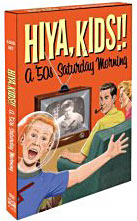 |
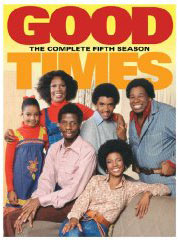 |
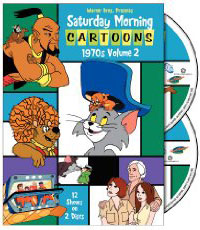 |
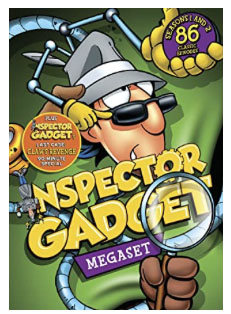 |
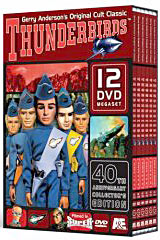 |
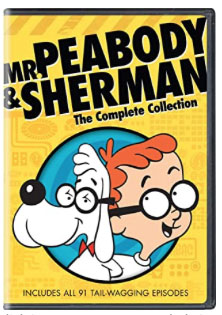 |
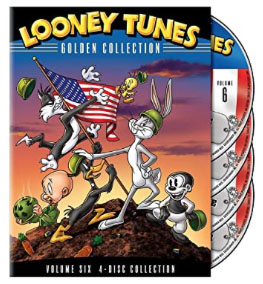 |
|
TV
Shows on DVD/ / / /
/ / / Punk Book/ /
/ / / / / Punk Book/ / / / / / / Holiday
Specials on DVD / /
/ / / / Classic
Commercials / / / / / TV
Shows on DVD Reviews |
|||||||
|
||||||||||||||
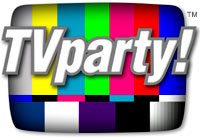 Contact Us / Classic TV DVDs TV Blog |
 |